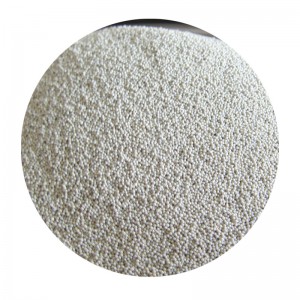The Price Dynamics of Resin Coated Sand Factors and Market Trends
As the construction and foundry industries continue to evolve, the demand for high-quality materials has never been more pronounced. Among these materials, resin coated sand has emerged as a critical component, particularly in the preparation of high-performance molds and cores. The pricing of resin coated sand is influenced by various factors, including raw material costs, production techniques, market demand, and regional variations.
Understanding Resin Coated Sand
Resin coated sand is made by mixing silica sand with a thermosetting resin and a catalyst. The resulting product exhibits superior properties, such as better dimensional accuracy, improved surface finish, and enhanced strength compared to traditional sand. These advantages make it a preferred choice for industries like aerospace, automotive, and even art foundry sectors, where precision is paramount.
Factors Influencing Price
1. Raw Material Costs The primary components of resin coated sand are silica sand and resin. Fluctuations in the prices of these materials can significantly impact the overall cost. For instance, the prices of silica sand can vary based on mining regulations, availability, and global demand. Similarly, resin prices may be affected by crude oil prices, as many resins are derived from petroleum products.
2. Production Processes The methodology used in the production of resin coated sand also plays a crucial role in determining its cost. Advanced production techniques, such as cold-box and hot-box processes, can lead to higher efficiency and superior product quality, but these methods often come at a higher initial investment. Manufacturers that employ cutting-edge technology may pass these costs on to consumers, thus influencing market prices.
3. Market Demand An upsurge in demand from specific industries can lead to price hikes. For example, the automotive and aerospace sectors have seen increased investments, leading to a sharp rise in demand for high-performance materials, including resin coated sand. This surge can create supply constraints, forcing prices upward as manufacturers scramble to meet heightened demand.
resin coated sand price

4. Regional Variations The price of resin coated sand can vary across different geographic regions due to various factors, including local production capabilities, transportation costs, and economic conditions. For instance, areas with abundant silica resources may offer lower prices compared to regions where raw materials need to be imported. Additionally, regulatory factors, such as environmental regulations, can also influence pricing structures in different locales.
5. Market Trends Recently, there has been a growing trend towards sustainable practices within the foundry industry. Manufacturers are seeking eco-friendly alternatives and methods that reduce waste and emissions. While these initiatives are essential for sustainability, they may initially lead to higher production costs, potentially increasing the price of resin coated sand in the short term.
Current Market Overview
As of late 2023, the price of resin coated sand has been on an upward trajectory due to a combination of the aforementioned factors. The ongoing geopolitical tensions, coupled with supply chain disruptions caused by the global pandemic, have exacerbated the situation, leading to increased logistics costs and raw material shortages.
Furthermore, as companies strive to innovate and adapt to changing market demands, the investment in new technologies could further push prices up in the near term. However, it is also worth noting that with increased production capacities and advancements in recycling processes, there may be stabilization in prices in the longer term.
Conclusion
In conclusion, the pricing of resin coated sand is influenced by a myriad of factors ranging from raw material costs and production techniques to market demand and regional variations. As industries continue to seek out superior materials that enhance performance and sustainability, understanding these dynamics is crucial for stakeholders involved in the supply chain. Keeping an eye on evolving trends will be essential for manufacturers and consumers alike as they navigate the complexities of this vital material's pricing landscape.
Post time:دسامبر . 29, 2024 23:38
Next:resin coated sand suppliers
